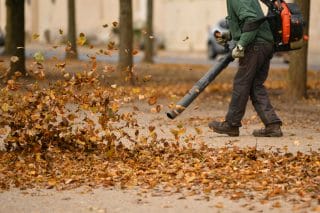Lawn Aeration Tips: Prepare Your Grass for Optimal Spring Growth
Posted On
A beautiful lawn doesn’t happen by accident—it starts below the surface. As the seasons change, proper lawn care lays the groundwork for lush, resilient turf in the months ahead. One of the most effective, often overlooked strategies? Lawn aeration.
At Princeton Scapes, we emphasize aeration as a foundational practice for long-term lawn health. Whether you’re managing a private estate, an HOA, or a commercial property, our tailored programs help clients build strong root systems, improve soil conditions, and promote vibrant growth.
Here’s how our expert lawn aeration tips for better grass growth can transform tired turf into thriving green space—just in time for spring.

What Is Lawn Aeration?
Aeration is the process of perforating the soil with small holes to allow air, water, and nutrients to reach the grass roots more effectively. Over time, soil becomes compacted due to foot traffic, weather conditions, and organic matter buildup. Compacted soil restricts root development, limits nutrient uptake, and reduces overall lawn health.
By relieving this compaction and improving soil structure, aeration helps prepare lawns for strong roots—the key to lush, thick turf in spring and summer.
Benefits of Aerating Your Lawn
Aeration isn’t just a maintenance task—it’s a transformative treatment that improves lawn performance from the ground up. At Princeton Scapes, we integrate aeration into our seasonal programs because of its far-reaching benefits:
1. Improved Root Growth
Aeration breaks up dense soil, allowing roots to expand deeper and wider. Deeper roots mean greater drought resistance, nutrient uptake, and long-term turf health.
2. Enhanced Nutrient Absorption
Fertilizers, water, and oxygen can more easily reach the root zone through aerated soil, leading to greener, more vigorous growth.
3. Reduced Thatch Build-Up
Aeration helps decompose thatch—a layer of dead grass and roots that can suffocate your lawn—by encouraging microbial activity and airflow.
4. Better Water Infiltration
Aerated lawns absorb water more effectively, reducing runoff and supporting consistent hydration during dry spells.
5. Stronger, Healthier Turf
The cumulative result of aeration is a denser, more resilient lawn that looks better and stands up to wear, pests, and environmental stress.
These benefits of aerating your lawn support not only spring success, but year-round performance.
When to Aerate: Timing Matters
The best time to aerate depends on your grass type and regional climate. For cool-season grasses common in the Northeast, fall and early spring are ideal. At Princeton Scapes, we often recommend late summer into early fall for the most lasting impact, but early spring aeration can also be highly beneficial.
Ideal Conditions Include:
- Moist (but not soggy) soil for clean core removal
- Moderate temperatures to support quick recovery
- At least 4–6 weeks of active growth ahead for root development
Our team evaluates each property’s turf type, use patterns, and seasonal performance to determine the best schedule.
Aeration Techniques for Lush Grass
At Princeton Scapes, we use proven aeration techniques for lush grass that are tailored to your lawn’s needs and conditions. The two primary methods include:
1. Core Aeration (Preferred Method)
Core aerators remove small plugs of soil and thatch from the lawn. These plugs break down naturally over time, enriching the soil with beneficial microbes.
- Best for compacted or heavily used lawns
- Provides deep penetration for lasting benefits
- Safe for most lawn types and soil conditions
2. Spike Aeration
Spike aerators use solid tines to punch holes in the ground without removing soil. This method can be helpful for light maintenance, but it may further compact the soil in some cases.
- Best for sandy or lightly compacted soils
- Quick, short-term results
- Less effective for high-traffic or clay-heavy areas
We always prioritize core aeration when aiming to prepare lawns for strong roots and long-term success.
Post-Aeration Best Practices
Aeration is just the beginning. To maximize the benefits, we follow up with services that build on this foundational work.
Follow-Up Steps Include:
- Overseeding: After aeration, open soil channels are ideal for seeding. This encourages thicker, more uniform grass coverage.
- Top Dressing: A light layer of compost or enriched soil can be applied to boost soil structure and seed germination.
- Fertilization: Nutrient-rich feeding post-aeration supports strong, healthy root development and early green-up.
- Proper Watering: Gentle, consistent irrigation ensures moisture reaches the roots during this critical growth phase.
Our team handles all of these tasks in sync with your aeration service, offering full-service care from soil to blade.
Tailored Aeration Programs for Every Property
Every property has different needs. Whether you’re restoring neglected turf, maintaining an estate lawn, or managing a shared-use area, we offer customized aeration and care programs that match your goals and budget.
We account for:
- Soil composition and compaction levels
- Foot traffic and use patterns
- Drainage issues or grading challenges
- Existing lawn health and maintenance history
By treating each lawn as unique, we deliver results that consistently exceed expectations—because we don’t just perform tasks, we solve landscape challenges.
Partner with Princeton Scapes for Stronger, Greener Lawns
At Princeton Scapes, we take a strategic, horticulturally sound approach to every service we provide. Our aeration programs are backed by trained professionals, consistent crews, and a deep understanding of Northeast growing conditions.
By following our expert lawn aeration tips for better grass growth, you’re giving your turf a head start on spring—one that pays dividends in appearance, performance, and longevity.
Ready to boost your lawn’s health from the roots up? Contact Princeton Scapes today to schedule a professional aeration and spring prep consultation.



